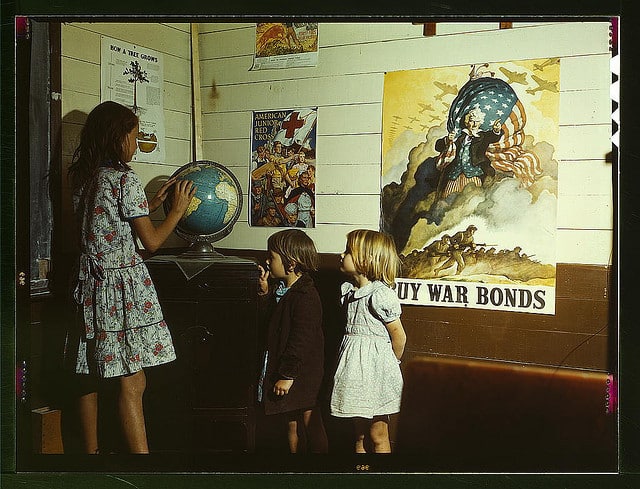Courtesy of the Library of Congress
This past week’s lesson study prompted some interesting and insightful dialogue in class with my colleagues regarding our prospective lesson plans in our respective student teaching placements. It quickly became obvious that though we share a singular passion for social studies, many of us have found ourselves teaching subjects and curriculum well outside our expertise and experience. Such is teaching.
I chose to focus my efforts on a human geography class I’ll be teaching at some point in my spring placement. My lesson plan revolved around evaluation and analysis of the agricultural revolution and its far reaching, though by no means worldwide, effects. Given the interest of my cooperating teacher and I in a cooperative learning environment, students would be broken into small groups and asked to evaluate the social, dietary, and environmental effects of an agricultural society compared to a nomadic one. They would have to support their evaluations with documents (pictures, video, and research articles) and then present their findings to the classroom. The students would engage in higher level thinking, critiquing a mode of life to which they’ve become more than accustomed, and comparing it to a lifestyle that’s all but extinct in the developed world.
lesson study was incredibly helpful when it came to simply putting my thoughts to paper in a more free-flowing manner of writing. The lesson plan format can often hamstring the loftier ideas one might wish to convey in the classroom; the lesson study helped to bear such goals in mind while focusing my efforts on the stringent requirements of a traditional lesson plan. It acted as the necessary intermediary between pedagogy and applicability. Discussion with my peers allowed for constructive criticism of our lesson plans. I, for one, would alter my lesson plan significantly after hearing the input of others. Having to vocalize and justify my lesson to my peers helped me realize that my plan was not easily explicable. If I could not explain it to a group of fellow educators, how might I explain it to a group of skeptical high school students?
There seems to be a legitimate effort on the part of myself and my peers to make lessons as engaging, interactive, and educative as possible. Few, if any, stuck to the traditional formula of lecture and assessment. Student-centered lesson planning on the part of prospective teachers portends a positive evolution of the educational system. Our work has just begun in the college classroom. The real difficulty lies in our success at applying what we’ve learned to a room full of learners.


I enjoyed your point about us teaching under the broad realm of “social studies,” but teaching specifically about subjects outside of our comfort zone. This falls under the adaptive skill set that teachers must have in order to thrive. Though we’re teachers, we must continue to be learners.
“The real difficulty lies in our success at applying what we’ve learned to a room full of learners.”
For my first observation this week I had my students focus on “values.” In the end, from comments I received from my US, CT, and various students, the lesson was pulled off quite well — but with a price. My cooperating teacher asked me how long it took me – from start to finish – to complete the lesson. As a rough estimate, I told her probably 5-6 hours. Now, obviously I have the time to prepare that much for a lesson from scratch, but that time frame wouldn’t be close to feasible for a full time teacher. The point is: I agree with your sentiments surrounding the “real difficulty.” Even with our skills, that difficulty is powerful force.
Absolutely. Hopefully we’ll develop a good repertoire of plans over the years, but to begin with, I think we’ll have to accept that we can’t put that much effort into every lesson.
Instead, let’s strive to borrow good plans from other teachers at every reasonable opportunity. Of course, the tricky part will be working them into a cohesive plan that we’re personally comfortable with and that suits our specific classes…
Thanks for the feedback, gentlemen. I’ve found so far in my own placement that, though the class is not curriculum based, my CT has a fairly refined vision of how the class should go. I have my first observation on Tuesday; now, I’m staring down the barrel of that difficulty I addressed. I’ve found the classroom I’m in now is focused much more on a general skill set (i.e., reading) than content knowledge. It’s made the lesson planning process more difficult than I anticipated. It’s easier to teach content than skills.